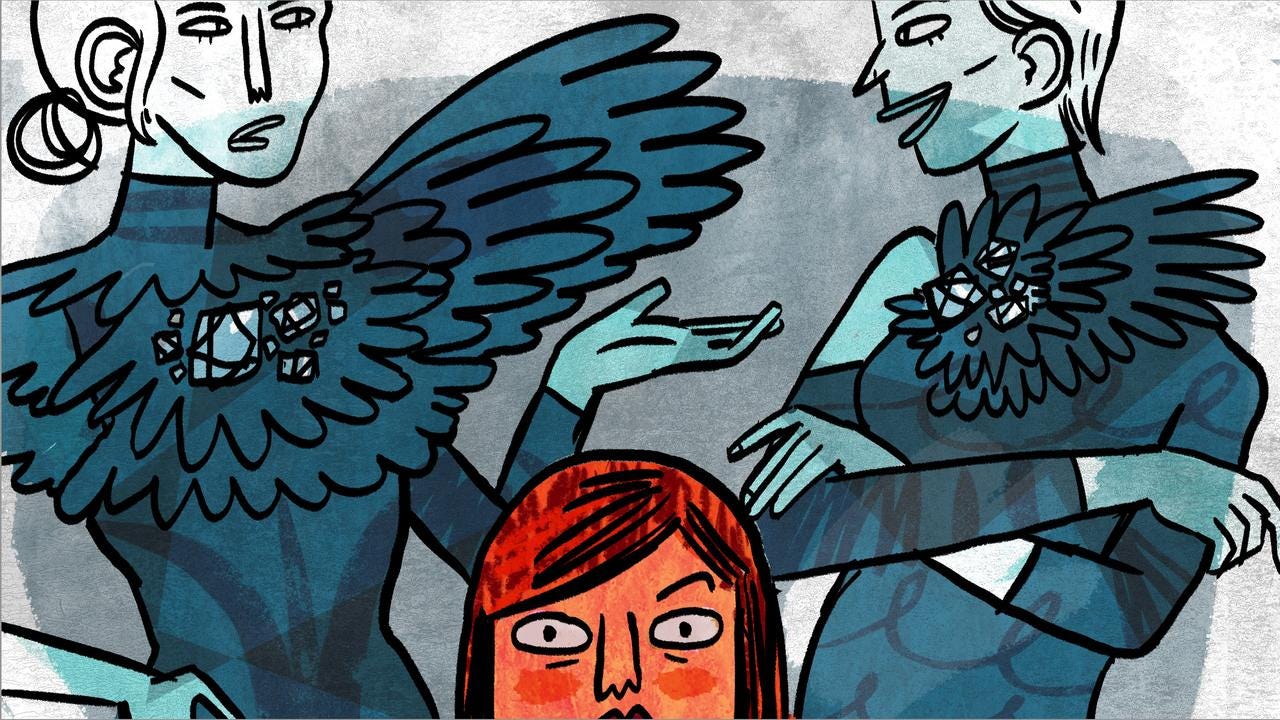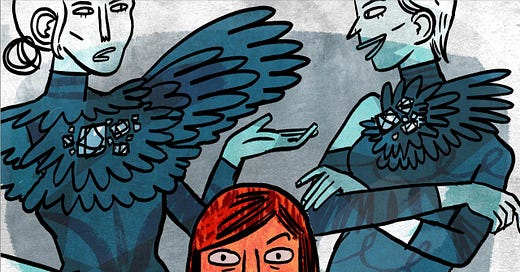Secret Life of a Fashion Week Peon
After the last strut down the glittery runways, the industry’s eyes turn to buyers’ showrooms, where one lowly worker gets an eye-opening look at how the fashion world really works.

Illustrations by Meghan Lands
I lied to get the job. It was my only option. After spending three hours failing every test the temp agency gave me, I was running out of ideas for how to pay next month’s rent.
But just as my miserable interview came to an end, the agent complimented me on my skirt. I told her that it was my mother's vintage Givenchy. I saw her eyes light up for a second before they settled back into the disappointed dullness I had come to accept from all the adults around me. Her stare told me that in spite of my designer skirt, "skill-less hack" was not a good look on me. And yet, something must have sparked her interest because she asked me if I had any previous experience as a “dresser.” I had no clue what a “dresser” was, but a preternatural conman’s confidence came over me, and I took a shot in the dark. Without hesitation I said that I had worked as an assistant in the costume department of a prominent ballet company. She didn't need to know that this “company” was…
Keep reading with a 7-day free trial
Subscribe to Narratively to keep reading this post and get 7 days of free access to the full post archives.




